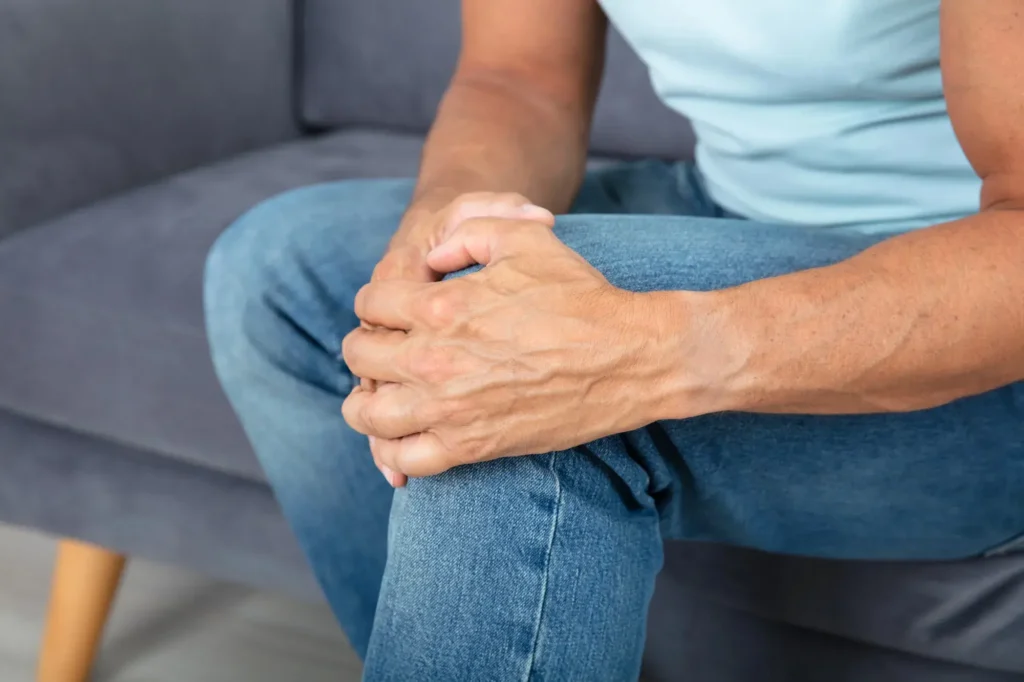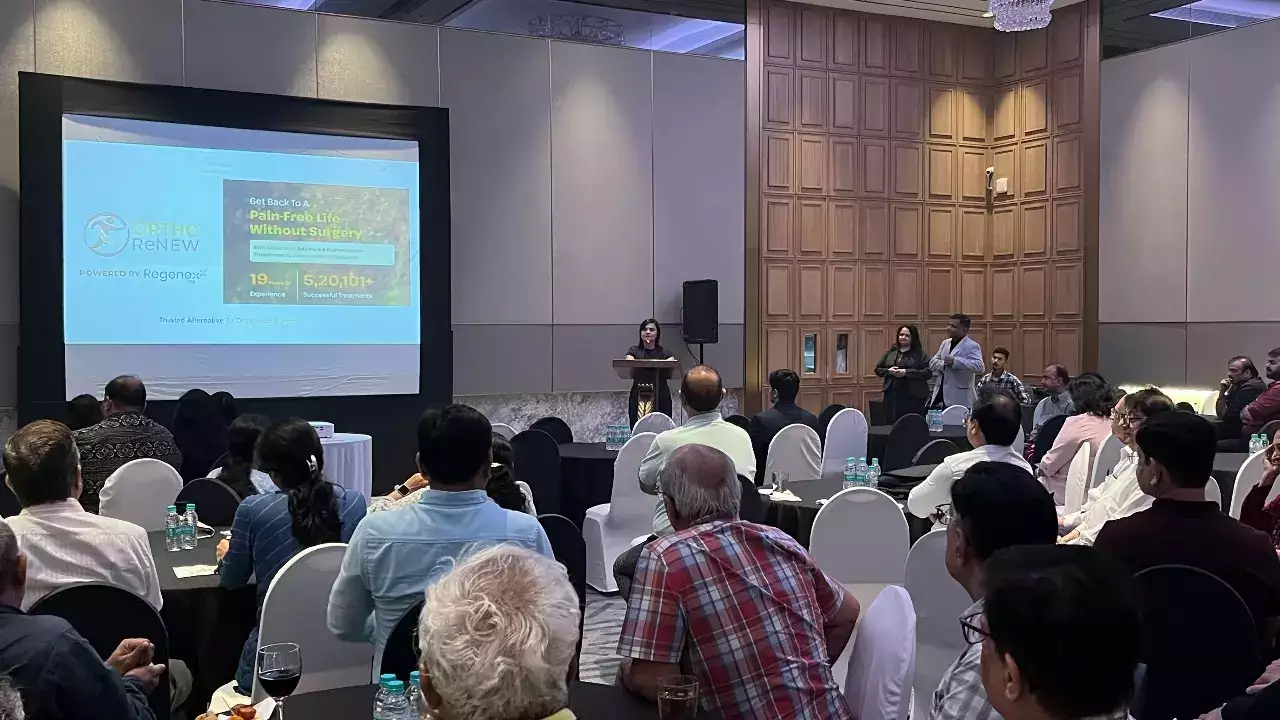The New Era of Treatment – Ortho Renew Regenerative treatment is a medical approach that focuses on repairing, restoring, and regenerating damaged tissues in the body using the body’s own healing mechanisms. This process involves the use of healing cells, platelet-rich plasma (PRP), and other biological materials to stimulate tissue growth and recovery. Unlike traditional treatments that often manage symptoms, regenerative therapies target the root cause of the injury or disease, promoting long-term healing. At ortho-renew we are focusing providing the best technology available globally now to Indian Patients. Benefits of Regenerative Treatment Over Surgery Regenerative treatment offers several advantages over surgery. It is minimally invasive, which means less pain, faster recovery times, and reduced risk of complications such as infections or blood clots. Unlike surgery, regenerative therapy does not require long recovery periods or involve major incisions. At Ortho Renew, with the help of these treatments, patients can return to their normal activities much sooner and with less rehabilitation. Additionally, regenerative treatments are often performed in outpatient settings, making them more convenient and cost-effective than surgical procedures. How Ortho Renew Helps Patients with Noninvasive Treatment Ortho Renew specializes in providing cutting-edge regenerative therapies to help patients recover from musculoskeletal conditions, such as joint pain, ligament injuries, and arthritis, without the need for invasive surgery. By utilizing advanced treatments like the advanced version of PRP, and heaing cell therapy, ORTHO Renew offers customized plans that help patients regain mobility and reduce pain naturally. ORTHO Renew’s Superior Technology What sets Ortho Renew apart is its state-of-the-art technology and research-driven approach. By using the latest advancements in regenerative medicine, Ortho Renew provides treatments that are more effective, safer, and longer-lasting than other healthcare partners. Their commitment to innovation ensures patients receive the highest quality care with the best possible outcomes.
Knee bursitis is the inflammation of fluid-filled sacs around the knee, known as bursae. It can occur due to repetitive motions, constant pressure on the knee, or injuries, and cause pain, tenderness, and swelling. When experiencing these symptoms, proper diagnosis is crucial. Symptoms like pain and inflammation might be signs of deeper issues like tendon damage [1]. Common treatments, such as painkillers or corticosteroid injections, can offer short-term relief. However, they don’t solve the underlying problem and can have severe side effects. If left untreated, these problems may lead to long-term pain and complications, as well as an over-reliance on medications. The Regenexx approach provides a non-surgical alternative to address the causes of knee pain. Interventional orthobiologics can help promote the body’s natural healing processes without the complications associated with surgery or long-term medication use. Defining the Anatomy of the Knee The knee is one of the body’s most complex joints. It connects the thigh bone (femur) to the shinbone (tibia). At the front of the knee is the patella, or kneecap. This is a small, triangular bone that protects the main knee joint. The bones in the knee joint are connected by strong bands of tissue, ligaments and tendons. Ligaments connect bones and stabilize the knee joint. Tendons attach muscles to bones, facilitating movement. Bursae are small sacs filled with fluid that act as “cushions”. They reduce friction on pressure points between bones and the tendons or muscles near the joints. Adults have around 160 bursae in the body [2]. They are located around major joints like shoulders, elbows, hips, and knees. Each knee contains 12 bursae. Five of them play a primary role: Prepatellar bursa: Located between the skin and the kneecap. Infrapatellar bursae: Located below the kneecap, they cushion the patellar tendon. Suprapatellar bursa: Located above the patella, between the thigh muscle and the knee joint. Pes anserine bursa: Located on the inner side of the knee, under the hamstring tendon. Semimembranosus bursa: Located on the inner side of the knee, near the semimembranosus muscle.
Knee pain is a widespread issue that affects millions of people, from athletes to those experiencing age-related joint deterioration. Traditionally, the go-to treatments for chronic knee pain have often been limited to medication, physical therapy, or surgery. However, in recent years, regenerative, non-surgical procedures have emerged as a promising alternative. These treatments, designed to promote the body’s natural healing process, are gaining traction among patients looking to avoid surgery. But are they worth it? Let’s dive deeper into the science and practicality of these treatments. What Are Regenerative Knee Procedures? Regenerative medicine focuses on harnessing the body’s ability to heal itself, using cutting-edge technology to repair or replace damaged tissues. The most common regenerative treatments for knee pain include: Super Concentrated Platelet Therapy: SCP involves extracting a patient’s blood, concentrating the platelets, and injecting them into the affected knee. Platelets are rich in growth factors that can promote healing, reduce inflammation, and potentially repair tissue damage. Stem Cell Therapy: In this procedure, stem cells—usually harvested from the patient’s bone marrow are injected into the knee joint. Stem cells have the unique ability to develop into various types of tissues, including cartilage, making them an appealing option for addressing joint damage. Prolotherapy: This technique involves injecting an irritant solution, such as dextrose, into the injured area. The solution triggers a mild inflammatory response that kickstarts the body’s natural healing mechanisms to strengthen and repair damaged ligaments and tissues. Pros: Minimally Invasive: These procedures are typically performed in a doctor’s office with minimal recovery time. Reduced Risks: Since the treatments use the body’s own cells or mild irritants, the risk of rejection or serious complications is lower. Potential for Tissue Repair: Unlike pain medications or cortisone shots, which mainly address symptoms, regenerative therapies aim to heal the underlying problem. Regenerative, non-surgical knee procedures offer a trusted alternative for patients seeking to manage knee pain without surgery. While early research and anecdotal evidence suggest they can be effective in promoting healing and improving knee function.
Contrary to popular belief, Lorem Ipsum is not simply random text. It has roots in a piece of classical Latin literature from 45 BC, making it over 2000 years old. Richard McClintock, a Latin professor at Hampden-Sydney College in Virginia, looked up one of the more obscure Latin words, consectetur, from a Lorem Ipsum passage, and going through the cites of the word in classical literature, discovered the undoubtable source. Lorem Ipsum comes from sections 1.10.32 and 1.10.33 of “de Finibus Bonorum et Malorum” (The Extremes of Good and Evil) by Cicero, written in 45 BC. This book is a treatise on the theory of ethics, very popular during the Renaissance. The first line of Lorem Ipsum, “Lorem ipsum dolor sit amet..”, comes from a line in section 1.10.32. The standard chunk of Lorem Ipsum used since the 1500s is reproduced below for those interested. Sections 1.10.32 and 1.10.33 from “de Finibus Bonorum et Malorum” by Cicero are also reproduced in their exact original form, accompanied by English versions from the 1914 translation by H. Rackham. Where can I get some?



